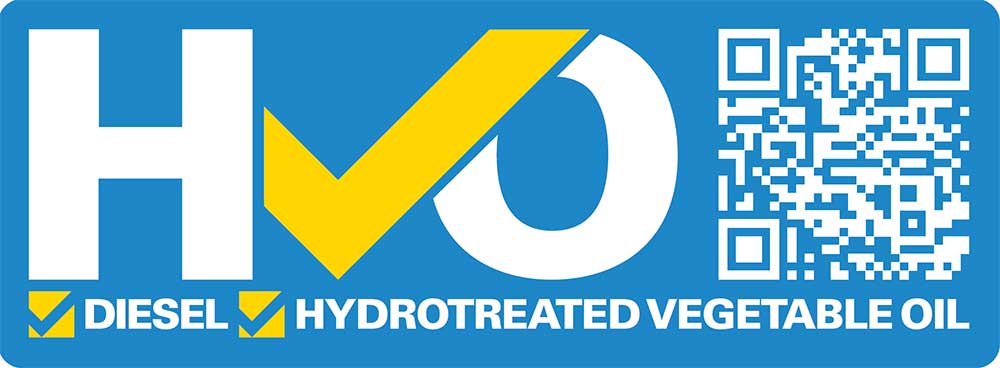Reducing emissions with HVO fuel
Sustainable refuelling of work platforms and forklifts
The demand for environmentally friendly drive concepts is increasing for work platforms, forklifts and mini cranes. Felbermayr is currently testing possible trend-setting alternatives that could reduce greenhouse gases - one of which is the use of HVO.
The majority of the units in our future-orientated rental fleet are already HVO-compatible. This means that a choice can be made between fossil diesel and/or HVO for marked diesel-powered rental units - mixed tank fillings are also possible. The use of the alternative fuel - made from hydrogenated vegetable oils and animal fats (HVO) - can cut direct and indirect emissions by up to 90 % in comparison to the use of diesel.
Refuelling rental equipment with HVO - tips and important information
- The marking on the rental unit informs you as to whether your rental unit is suitable for HVO. Suitable units will be successively labelled with stickers in the future.
- It is possible to mix and swap fuelling with conventional diesel and HVO.
- Find out about the availability of HVO in your region. The provider network is constantly being expanded.
The use of HVO means that CO2 emissions can be reduced by 90 % in comparison to the use of diesel - depending on the raw material and production. The reduction affects both the direct emissions from renting units as well as the indirect emissions from transporting the units to the place of deployment. HVO is essentially a drop-in fuel and can therefore be used in most existing vehicle fleets without issue.
Further benefits in use:
- HVO is free of sulphur and odourless
- Improved low-temperature performance in comparison to fossil diesel - making it easier to start the engine, especially in winter
- Improved engine performance thanks to higher cetane number
HVO may only be used to refuel units that are labelled "HVO".
A large proportion of the work platforms, forklifts, and mini cranes in the Felbermayr rental fleet are HVO-compatible and approved for use with this fuel.
Suitable units will be successively labelled with stickers in the future – see figure.

